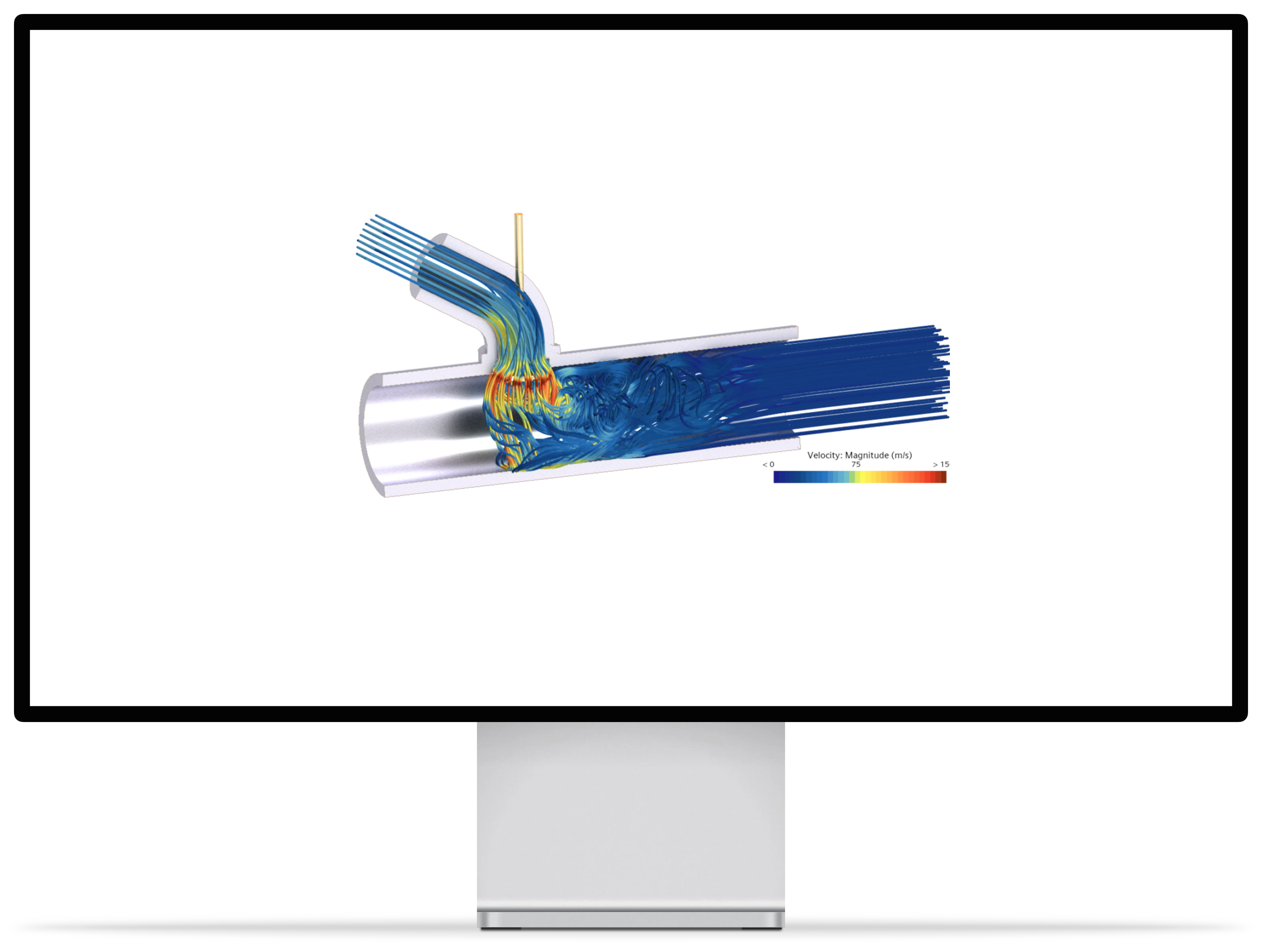High performance cooling of a charging cable for HPC/MWC application
Scroll3D CFD simulation of temperature distribution in a cooled charging cable for High Power Charging (HPC) / Mega Watt Charging (MWC) application
Due to the increasing pressure from customers to reduce charging time for e-mobility the power density of charging cables must increase. Developers are faced with the challenge to reduce weight and cost on one hand and with increasing temperatures due to increasing power density on the other hand.
Therefore the cooling concept must be analysed carefully to obtain cost-effective and reliable charging cables.
The objectives of this project can be summarised as follows:
• Analyse temperature distribution in a charging cable and in a connector for two different cooling concepts and different cooling fluids – “direct” vs.“indirect” cooling
• Confirm the findings for various operating conditions
• Use a simplified and flexible configuration to obtain results fast for different geometry variations, varying fluid properties and various operating conditions – and avoid disregard of Non-Disclosure Agreements
The following picture shows the geometry of the simplified CFD setup.

In the following figure a comparison between the “direct-cooling” and the“indirect-cooling” approach can be seen. While in the "direct-cooling" approach the fluid has a direct interface with the “hot” parts the "indirect-cooling" approach has an electrical insulation around the connector.

A selection of applied fluid properties are shown in the following figure.

The following figure shows the boundary conditions where the colors indicate the ambient, the fluid and the electrical conditions. These boundary conditions can be varied according to the our customers needs.

The first result shows the temperature distribution in all parts, so the solids and the fluid are shown here. The comparison shows that the electrical insulation is at the same time a temperature insulator leading to a reduced heat flux to the fluid in the IDI case.

The connector temperature is higher for all investigated volumetric flow rates for the "indirect cooling concept" what can be seen in the following figure. A similar results has been observed for the variation of the ambient temperature (not shown here).

The required inlet pressure is shown in the following figure. As expected a lower viscosity leads to a lower required intake pressure.

The results show that - from a cooling point of view - the DI cooling approach is more efficient.
Please feel free to contact us in case you are interested to see more results and if you have any further questions.
Share Project:

CFD-Simulation of a valve
View Project
Hochleistungs-Kühlung eines Ladekabels für HPC/MWC Anwendung
Wie die Kühlung für hohe Ströme gewährleistet werden kann
Projekt ansehen
